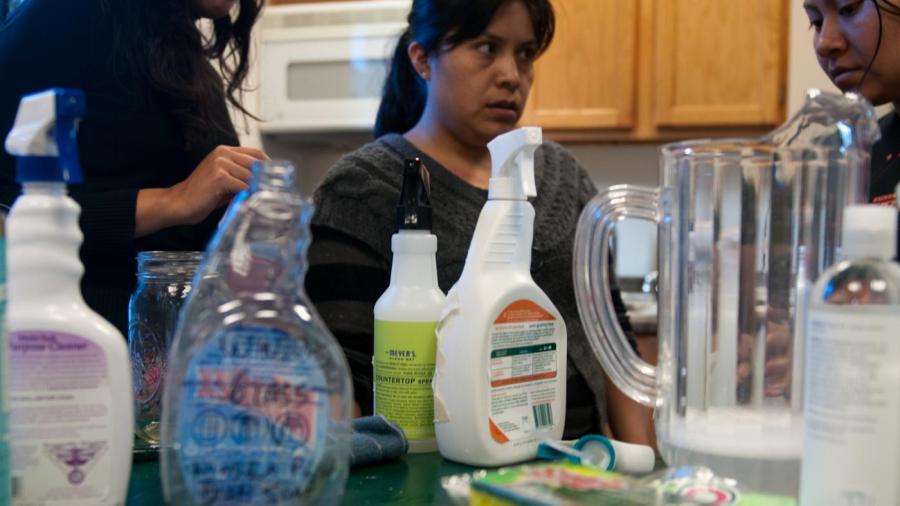What Are Examples of Disinfectants?

According to Disinfected, there are three major types of disinfectants: alcohols, chlorine and aldehydes. Isopropyl alcohol and ethanol are examples of alcohols used to disinfect surfaces. Formaldehyde is the most commonly known example of an aldehyde disinfectant. Wikipedia states that disinfectants are applied to nonliving surfaces for antimicrobial purposes. They differ from antiseptics and antibiotics, which are used as antimicrobial agents for living beings.
In addition to the major disinfectant types, there are a variety of other types of disinfectants, including air disinfectants, oxidizing agents, phenolics, quaternary ammonia compounds, silver and copper alloys. Copper alloys are known to work against E. coli bacteria, the influenza A virus, the adenovirus and fungi, among other microbes. Air disinfectants are generally dispensed in aerosol or vapor form and must be present in adequate concentrations in the air in order to be effective against airborne microbes. The common household product Lysol is a good example of an air disinfectant. Air disinfectants are often glycols, such as propylene glycol or triethylene glycol. Studies have shown that these are effective against mold fungi, influenza virus, bacteria and penicillium chrysogenum. Ethanol and isopropanol are more often used as antiseptics than disinfectants, though they are very effective antimicrobial agents.





